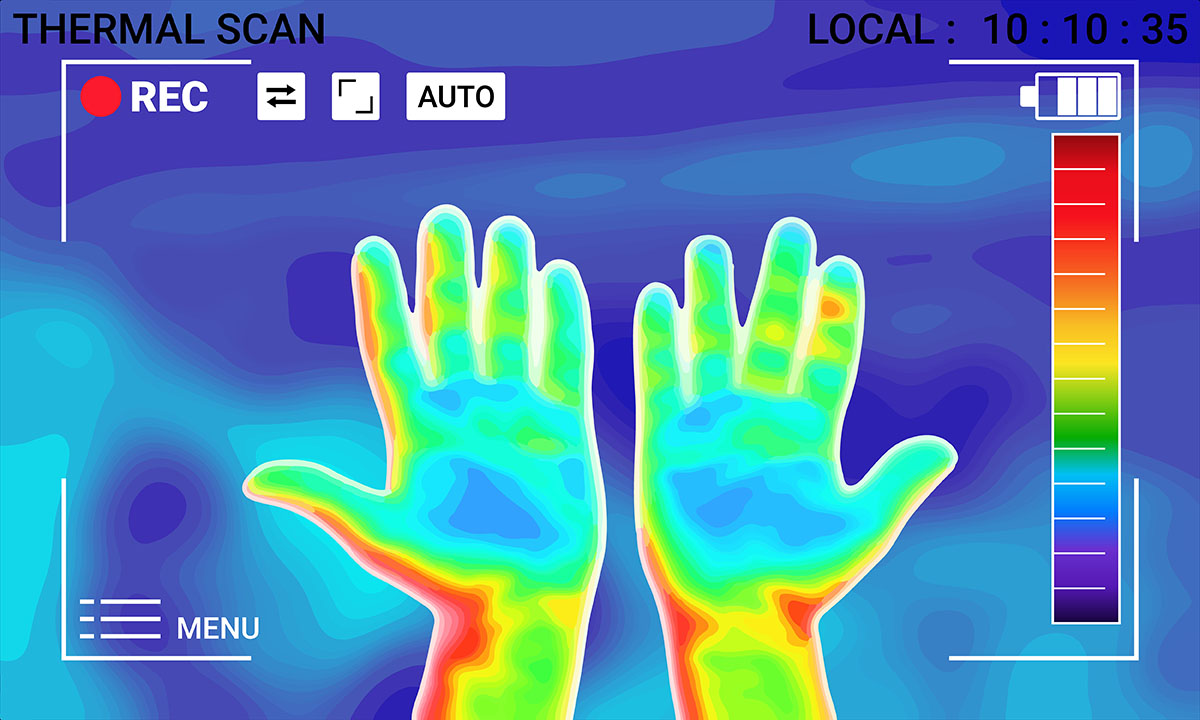
< Back
infrared
Definition
Infrared light is a type of electromagnetic radiation that has a wavelength longer than visible light but shorter than radio waves. It is invisible to the human eye, but it can be detected by special sensors.
Infrared light is emitted by all warm objects, including the human body. This is why we can feel infrared light as heat.
Infrared light is used in many different ways, such as:
- Remote controls: Infrared light is used to transmit signals from remote controls to devices such as TVs and stereos.
- Night vision goggles: Infrared light can be used to see in the dark because it can penetrate fog and other obscurants that block visible light.
- Heat sensors: Infrared sensors can be used to measure temperature. This is useful in applications such as weather forecasting and medical diagnostics.
- Telescopes: Infrared telescopes can be used to study objects that are too cold to emit visible light, such as distant galaxies and newborn stars.
How can the word be used?
Infrared radiation is used in remote controls.

Different forms of the word
Noun: Infrared is a type of electromagnetic radiation that has wavelengths longer than visible light but shorter than microwaves. It is invisible to the human eye, but it can be detected by special cameras and sensors.
Adjective: Infrared means relating to or using infrared radiation. For example, an infrared camera is a camera that uses infrared radiation to see in the dark.
Etymology
The word "infrared" is a combination of the words "infra" and "red".
Infra means "below" or "under".
Red refers to the color of visible light that has the longest wavelength.
So, the word "infrared" literally means "below red". This is a very accurate description of the meaning of the word, as infrared radiation has wavelengths that are longer than visible red light.
Question
What is infrared?
AQA Science Exam Question and Answer
Question:
Explain the concept of infrared radiation and its significance in various real-world applications, detailing how it differs from visible light and discussing its role in thermal imaging, remote sensing, and energy transfer.
Answer:
Infrared radiation is a form of electromagnetic radiation that lies beyond the visible light spectrum. It is characterised by longer wavelengths and lower energy compared to visible light. While we cannot see infrared radiation with the naked eye, it has significant practical applications in different fields.
One prominent application of infrared radiation is thermal imaging. Infrared cameras detect the heat emitted by objects and convert it into visible images, allowing us to visualise temperature differences. This technology is used in various sectors, including firefighting, industrial inspections, and medical diagnostics.
Remote sensing is another crucial application. Earth observation satellites equipped with infrared sensors can gather valuable data about surface temperatures, vegetation health, and even atmospheric conditions. This information aids in climate studies, disaster monitoring, and urban planning.
Infrared radiation also plays a pivotal role in energy transfer. Sunlight contains infrared radiation that warms the Earth's surface. This heat is absorbed by objects, re-emitted as infrared radiation, and contributes to the greenhouse effect, regulating the planet's temperature.
In summary, infrared radiation, though invisible to us, has far-reaching applications in thermal imaging, remote sensing, and energy transfer. Its unique properties and interactions with matter make it an essential tool in various scientific and technological advancements, enabling us to better understand and harness the energy and processes of the natural world.